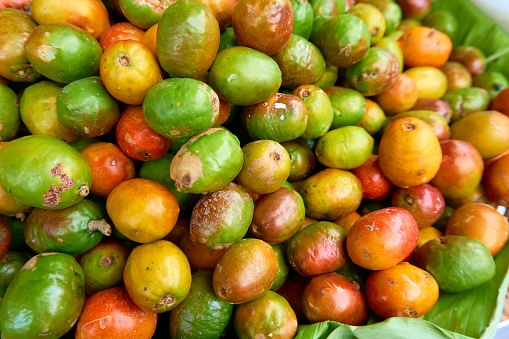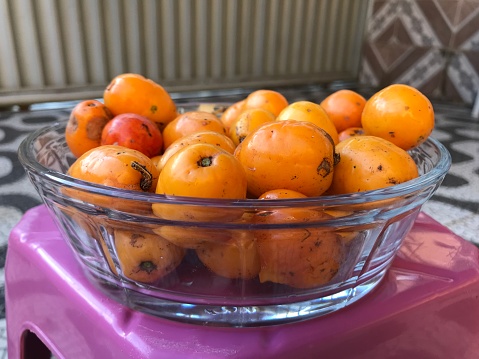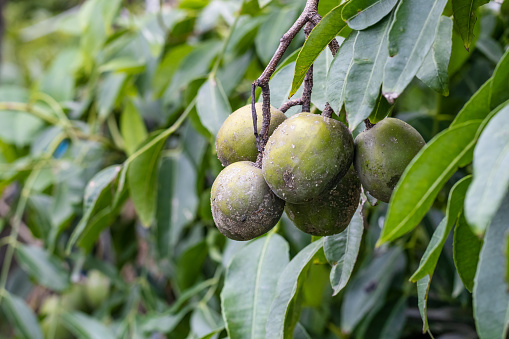The Philippines has a tropical environment with temperatures ranging from 20 to 30 degrees Celsius. Many fruit species can adapt to the Philippine environment due to its warmth and humidity. The primary focus of this initiative will be on the siniguela, commonly known as the Spanish plum, which is a low-cost Filipino fruit.
Siniguela trees may reach a height of five meters and have a sturdy trunk with thick brown spreading limbs. The siniguela tree is known for a few functional medical cures, including the decoction of the bark. It is used to treat dysentery and infantile tympanites, the bark sapk, which is used to treat stomatitis in an infant’s mouth, and the decoction of the fruit, which is used to treat diarrhea, dysentery, and gonorrhea.
Fruits are nature’s method of expressing happiness. This article explains how to plant Siniguela properly. So, let’s get started.
Siniguela’s Background
Sineguelas (Spondias purpurea), often known as Spanish plum, is a plant endemic to Mexico and Central and South America’s western coasts. The Spaniards were brought over 400 years ago to the Philippine archipelago.
The leafy greens and water-loving veggies that were plentiful and vigorous only a few weeks ago are now scarce, and the focus on produce is turning to root crops and all of those summer fruits. Several fruits are ripening simultaneously in a yearly endeavour to spread themselves and seed the land before the rainy season.
The fruit is 1 to 1.5 inches long and starts purple or maroon green before becoming yellow or dark crimson as it ripens. When somewhat astringent, the skin is tight and glossy, and the meat is firm; when ripe, the flesh is soft, sweet, and mushy. They are in season from April through June, although they appear to be at their best around May.

Siniguela Planting Instructions
Let’s get the right things done faster and learn how to plant Siniguela.
Step 01.
Siniguela can be purchased from a market vendor. Purchase Siniguela grown in your area or in a comparable environment to assure it will thrive in your hardiness zone. Early-maturing kinds should be avoided. Remove the meat from the fruits and eat it. Early-maturing kinds should be avoided.
Step 02.
Choose the plum seed that tastes the best to try to plant, as plum seeds frequently carry on the qualities of the parent plant quite well. Continue to remove all of the flesh until the pit seems to be bare. Place the pot on a windowsill to dry for a few days. You’ll be able to preserve the seed within the pit more readily as it dries and shrinks. When the shell dries, it cracks more easily. Take a little nutcracker, for example.
Step 03.
Place the pit between the two ends horizontally. Gently crack it. Place the almond-shaped seed to the side. You’ll need this to sprout and plant. Fill a glass halfway with water. Place your seed in it. You can germinate it if it sinks, but you should keep breaking pits until you find a healthy seed if it floats. Soak the seeds in the glass of water you just poured overnight.
Step 04.
Fill a two-thirds full plastic bag or canning jar with fertile compost. Wet the soil just enough to make it damp but not soggy. Seal the plastic bag or jar after placing the seed or seeds within the compost. Shake the container to let the seed penetrate the loose dirt further. Preheat your fridge to around 40 degrees Fahrenheit. Place the jar or bag in the refrigerator to begin the stratification process.
Step 05.
Choose a frost-free location. During this chilly sprouting period, the seeds germinate, planting and developing them into a tree. Choose a somewhat shaded location where you can mulch and cover the tree to protect it from frost, harming young plum trees. It must be in direct sunlight.
Step 06.
Before planting, make sure you have plenty of well-drained soil and compost on hand. It will also drain better if you add dirt. A tiny hole a few inches deeper than the roots should be dug. In the centre, make a tiny mound of earth. Spread the roots around the mound and place the seed on it. Water the area and keep it well-protected. Before the earth dries out, water deeply. In three to five years, your plum tree should yield fruit.

Health Benefits of Siniguelas
Here are some health benefits of Siniguelas.
1. It can help to boost your immune system.
Singular is high in vitamins A, B, and C, calcium, iron, and phosphorus, critical for the immune system. Because of their nutritious richness, siniguelas can also help dengue sufferers. Colds and flu, as well as other infectious virus-related disorders, might be avoided with this benefit.
2. It gives you the energy you require.
Iron and carbs enable the body to carry out its everyday jobs and responsibilities. It signifies that the body has all the nutrients to function correctly. The good news is that Siniguelas has these nutrients, thus having them in your diet will benefit you. Don’t forget to incorporate siniguelas the next time you’re looking for an energy boost.
3. It improves the way your body works.
The antioxidant content of Sinigwelas is also well-known. This helps combat the damaging radicals in one’s body. This also reduces the risk of infections. The body will be significantly safeguarded due to the ingestion of siniguelas.

FAQ
Is Sineguelas a shrub or a tree?
Sineguelas is a deciduous tree that grows up to 5 meters tall. The trunk is thickly branched and sturdy. The leaves are pinnate and are 15 to 25 centimetres in length.
What is Sineguelas’ English like?
Sineguelas, or Spanish Plum in English, is a native of Mexico and Central and South America’s western coasts.
Is Siniguela a sort of fruit?
Sineguelas, sometimes known as the Spanish Plum, is an underappreciated fruit popular among youngsters as a beloved tree-climbing, fruit-stealing snack, similar to guavas and star apples.
Can Siniguela be eaten in a variety of ways?
Red Spanish Plums are eaten raw, boiled into jelly, crushed between the fingers, and drained for a refreshing drink.
What is the flavour of Siniguela?
In addition, there is a substantial white seed that is inedible, bitter, and fibrous that is securely glued to the meat. Green Spanish plums are unripe fruit variants with a brittle texture and astringent, musky, sour flavour with green apple undertones.
Closing Words
Through plant growth advice websites and actual observations and experiments with growing siniguela plants, the primary goal of this study will be to learn more about the biology and techniques of irrigation for siniguela. Its health benefits are all useful in keeping a healthy lifestyle.
Consequently, you may use these directions and information to help you plant Siniguela. Now is the time to sow your seeds carefully using the procedures outlined above so that you can enjoy the seasons.
Best wishes!


